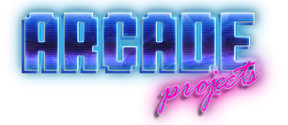BroadwayJose
Professional
The title kinda says it all. For the first time I hooked up my Naomi2 via Capcom I/O to an Astro City cab. Colors are washed out and the image is pretty crap overall. Up to now I've been running on 31Khz mode directly connected to VGA monitors and it looked outstanding of course. On 15Khz mode via the IO board (using same VGA cable and everything else including a Sun PSU to power the Naomi itself), it's night and day how much worse the video looks.
Tried also with the Sega ver b I/O and it looked even worse than with the Capcom I/O: wavy effects, shaky image, colors even more washed out. By comparison I have no such issues running a system 256 via Namco I/O on the same cab in 15Khz mode - video looks sharp and much cleaner than the Naomi setup. Definitely no such issues with native 15Khz hardware on this machine, so it's not the monitor and likely not the cabinet components directly. Pretty sure it's a problem with the IO board but I'm not sure what to do to improve the image. Any suggestions?
Tried also with the Sega ver b I/O and it looked even worse than with the Capcom I/O: wavy effects, shaky image, colors even more washed out. By comparison I have no such issues running a system 256 via Namco I/O on the same cab in 15Khz mode - video looks sharp and much cleaner than the Naomi setup. Definitely no such issues with native 15Khz hardware on this machine, so it's not the monitor and likely not the cabinet components directly. Pretty sure it's a problem with the IO board but I'm not sure what to do to improve the image. Any suggestions?

